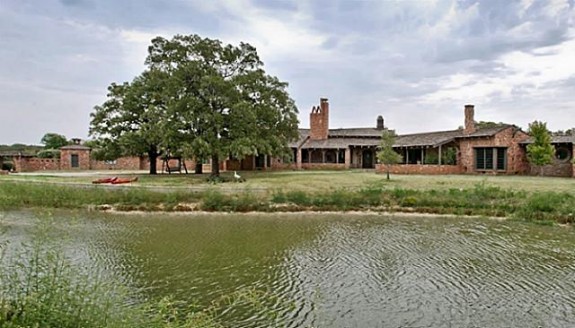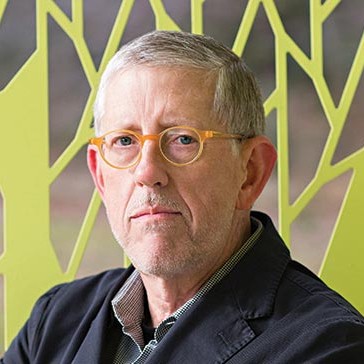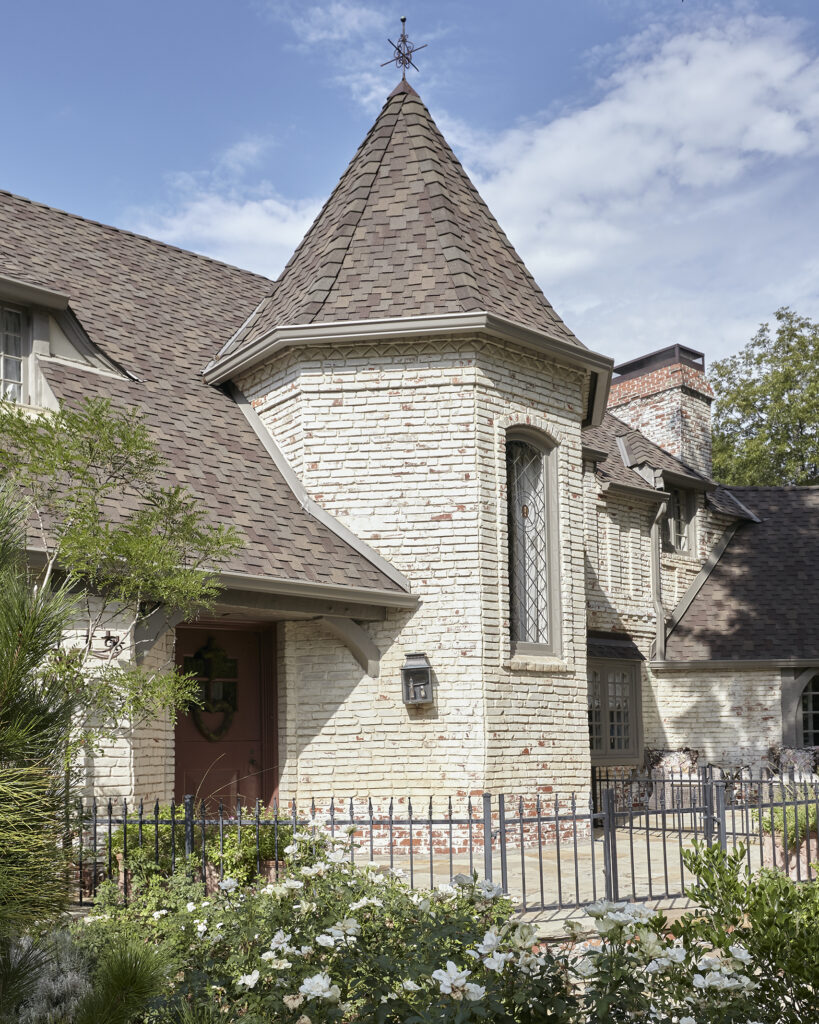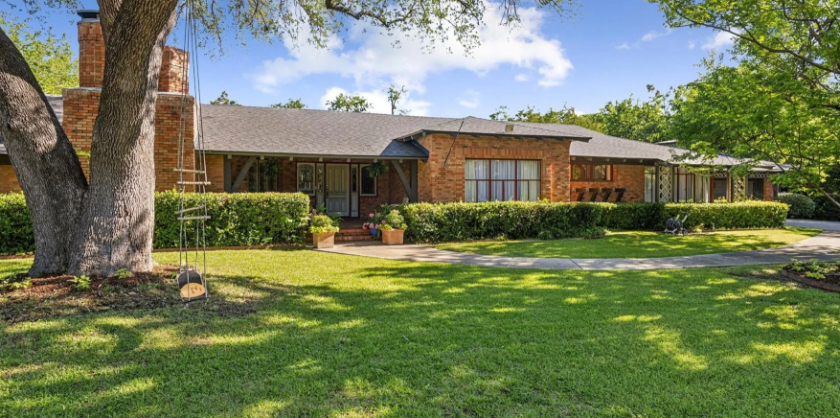 Paigebrook, the home once owned by Westlake Mayor Scott Bradley and his wife, Kelly Bradley, the former director of Metroport Meals on Wheels, is an example of Dilbeck’s work. This enchanting house was even moved brick by brick from one location to another.
Paigebrook, the home once owned by Westlake Mayor Scott Bradley and his wife, Kelly Bradley, the former director of Metroport Meals on Wheels, is an example of Dilbeck’s work. This enchanting house was even moved brick by brick from one location to another.
The Western Hills Hotel, known as a trend-setting icon, once stood on what was considered the far western edge of Fort Worth.
Although demolished now, this 1951 hotel was revolutionary, attracting national attention. Its notoriety was owed to architect trailblazer Charles Dilbeck, the hotel’s brilliant designer. Dilbeck’s bold lines and modern concept even earned the Fort Worth hotel a feature article in Time magazine.
“It was one of the first truly modern motor hotels,” said architect Willis Winters of Dilbeck’s innovative design. “It changed the lodging industry across America. It was a national model for a luxury, a resort hotel with first-class dining facilities and retail stores within the hotel complex. It had never been done before.”
Public Lecture
 Willis Winters
Willis Winters
Winters, who is not only an accomplished architect but an expert on Dilbeck’s distinctive designs, has other stories to tell about Dilbeck and his work in Fort Worth. He will share those stories when he is the featured speaker Oct. 16 at the 2025 Cantey Lecture and Preservation Awards. The lecture will take place at 5:30 p.m. that day at The Woman’s Club of Fort Worth, located at 1316 Pennsylvania Ave. The talk will focus on Dilbeck’s distinctive houses found in Tarrant County.
Dilbeck’s work has a fan following, and acquiring one of his houses can become a bucket list journey for some avid devotees.
“He designed five or six really great houses in Fort Worth,” Winters said. “His houses are so recognizable. Dilbeck’s work always stood out on a street.”
 The Russell Griffith house, built in 1941, still stands on Westridge Avenue in Fort Worth. Photo courtesy of Willis Winters.
The Russell Griffith house, built in 1941, still stands on Westridge Avenue in Fort Worth. Photo courtesy of Willis Winters.
Upcoming Book
A recognized authority on Dilbeck’s vast portfolio of work, Winters is currently completing a book about the prolific architect. The book, entitled “Dilbeck: The Architecture of Charles Stevens Dilbeck,” will be published by Texas A&M Press in the spring of 2027.
Dilbeck, who lived from 1907 to 1990, was known for his distinctive residential and hospitality designs, especially in Fort Worth, Dallas, Tulsa, and other areas of the U.S. He was acclaimed for his romantic, eclectic, and sometimes quirky style that blended diverse influences. Even as a child, Winters could recognize Dilbeck’s distinctive style in Dallas neighborhoods.
”I was always aware of these really cool houses I liked,” Winters said, remembering his childhood fascination with Dilbeck’s unique designs around the Park Cities. “I couldn’t tell the styles, but I knew what I liked.”
 This Dallas residence is an example of a Dilbeck ranch-style residence.
This Dallas residence is an example of a Dilbeck ranch-style residence.
Texas Favorite
Winters himself became an architect. Eventually, he researched Dilbeck’s work, and his respect for Dilbeck’s designs grew.
“He’s my favorite residential architect in Texas,” Winters said during a recent interview.
Those houses, the hospitality structures, and the upcoming book will be the focus of Winters’ public lecture for Historic Fort Worth. The talk will be punctuated with the book’s photos, which were taken by Dilbeck’s grandson.
Winters has his own distinguished career as an architect and city planner. He is director emeritus of the Dallas Park and Recreation Department, and his municipal career was honored with a city park bearing his name. Currently, he is president of Preservation Texas, a non-profit dedicated to the protection of the state’s historically significant sites.
Before joining the nation’s fifth-largest park system, Winters spent 13 years as a practicing architect in Dallas. Graduating first in his class at the University of Texas at Austin’s School of Architecture, he later oversaw more than $1 billion in capital projects for Dallas’ park department. His portfolio includes major upgrades to the Dallas Arboretum, Dallas Zoo, and Fair Park; 80 miles of trails; more than 40 architect-designed pavilions; and the creation of seven new downtown parks.
In addition to his book on Dilbeck, he is the author of seven books concerning the history of architecture and planning in Dallas and across Texas. His works include Crafting Traditions: The Architecture of Mark Lemmon, co-authored with Rick Brettell; Great American Suburbs: The Houses of the Park Cities, co-authored with Virginia McAlester; Fair Park; and The Buildings of Texas, Volume II, co-authored with others.
Cantey Lecture Series
Willis’ talk on Dilbeck’s career will serve as the 2025 installment of the annual Cantey Lecture Series. The Fort Worth tradition annually features a prominent speaker on historic preservation and architectural history. During the event, Historic Fort Worth Inc. presents the Cantey Awards, honoring excellence in preservation, stewardship, and leadership. Together, the lecture and awards amplify the non-profit organization’s mission to protect and promote Fort Worth’s historic resources.
The event will begin at 5:30 p.m. with the preservation awards announced following Willis’ talk. Admission is free for current members of Historic Fort Worth Inc., and nonmembers may attend for $50. Registration is available at Cantey Tickets 2025 – Historic Fort Worth.